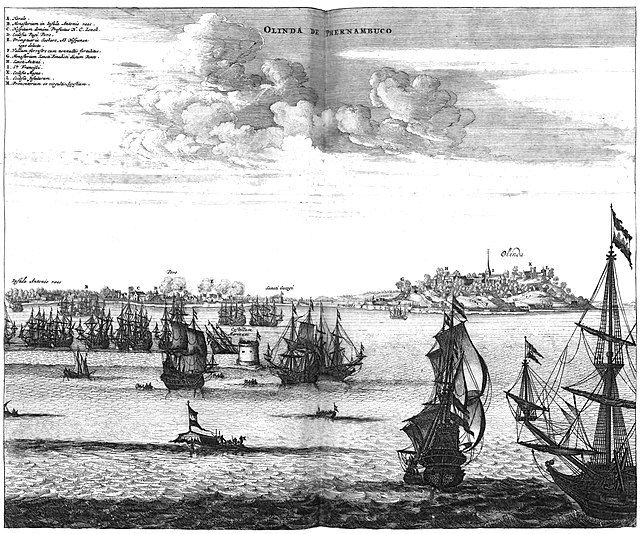The Iberian Union is a historiographical term used to describe the dynastic union of the Monarchy of Spain, which in turn was itself a dynastic union of the crowns of Castile and Aragon, and the Kingdom of Portugal, and of their respective colonial empires, that existed between 1580 and 1640 and brought the entire Iberian Peninsula except Andorra, as well as Portuguese and Spanish overseas possessions, under the Spanish Habsburg monarchs Philip II, Philip III, and Philip IV. The union began after the Portuguese crisis of succession and the ensuing War of the Portuguese Succession, and lasted until the Portuguese Restoration War, during which the House of Braganza was established as Portugal's new ruling dynasty with the acclamation of John IV as the new King of Portugal.
1630: Dutch siege of Olinda, located in the Brazilian captaincy of Pernambuco, the largest and richest sugar-producing area in the world.
Acclamation of John IV as King of Portugal (1908), painting by Veloso Salgado in the Military Museum, Lisbon.
A dynastic union is a type of union in which different states are governed beneath the same dynasty, with their boundaries, their laws, and their interests remaining distinct from each other.
The Catholic Monarchs and Christopher Columbus, 1493



